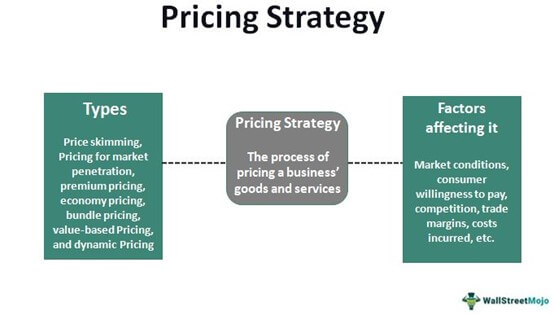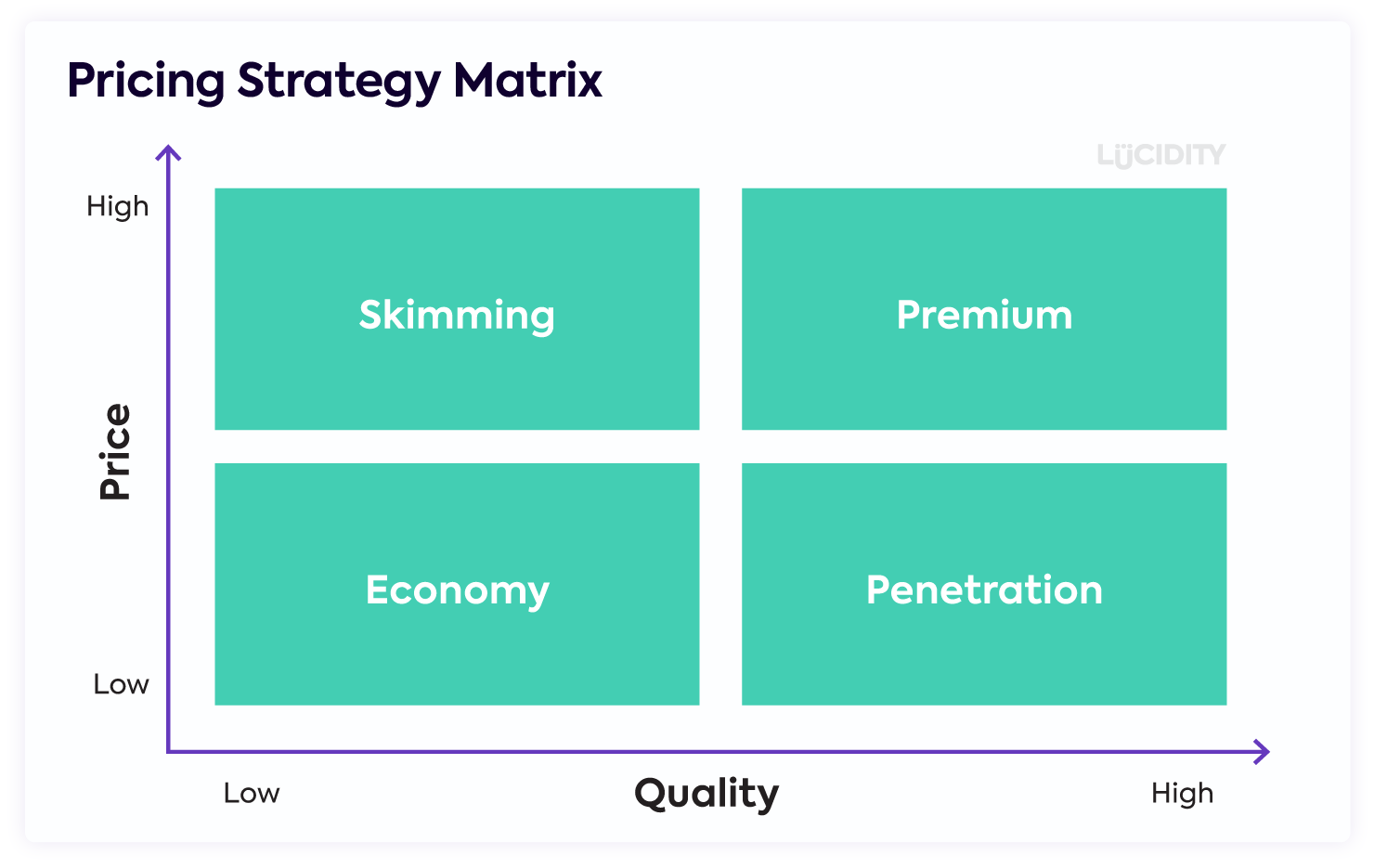Comprehending Pricing Strategies: An Overview to Boosting Competitiveness
In a significantly competitive landscape, grasping prices methods is important for services aiming to improve their market placement. Comprehending rival rates and the mental facets that influence customer actions can develop a nuanced method to rates that reverberates with target audiences.
Relevance of Prices Methods
In the affordable landscape of company, the relevance of prices strategies can not be overstated. Prices acts as a critical lever for organizations, influencing both market positioning and consumer assumption. A distinct rates strategy can improve profitability, drive sales, and develop an one-upmanship.

Comprehending client behavior is important in crafting pricing methods. Insights right into rate sensitivity, regarded value, and affordable offerings allow businesses to adapt their prices versions appropriately. Furthermore, normal analysis of rates performance is needed to reply to market dynamics and customer patterns.
Ultimately, a robust rates method is indispensable not only for revenue generation but likewise for long-lasting company stability. It forms brand identity, affects consumer commitment, and plays a crucial role in the overall advertising and marketing technique. Therefore, organizations have to invest time and sources in establishing and refining their prices approaches to flourish in an ever-evolving marketplace.
Kinds Of Rates Designs
Just how operate figure out one of the most effective method to price their service or products? The response depends on comprehending various rates designs, each suited to various market conditions and organization objectives.
One widespread model is cost-plus pricing, where a set percentage is contributed to the total cost of production. This method makes certain that all prices are covered while producing a revenue. On the other hand, value-based rates concentrates on the regarded worth of the item to the consumer, allowing services to charge a costs based upon customer need and complete satisfaction.
One more technique is dynamic pricing, typically made use of in industries such as travel and friendliness. This model changes prices in real-time based upon market demand, competitor rates, and various other exterior variables. Penetration pricing is additionally considerable, where businesses initially established reduced rates to go into an affordable market and gain market share, later enhancing rates once a customer base is established.
Last but not least, skimming prices includes setting high preliminary costs for cutting-edge or new products, maximizing early adopters before reducing prices over time. Recognizing these designs makes it possible for services to purposefully position themselves in the market, straightening their rates techniques with their overarching objectives.

Studying Competitor Prices
Understanding rival prices is a crucial element of developing an efficient rates approach. Organizations has to carry out detailed analyses of their rivals' rates structures to recognize market positioning, analyze possible risks, and discover possibilities for differentiation. This involves gathering data on rivals' rates, advertising techniques, and any discounts or motivations they provide.
Assess their prices versions, including any kind of tiered prices systems, membership charges, or mass discounts - Pricing Strategy. Understanding the rationale behind these rates techniques can provide understandings into consumer habits and choices.
It is additionally critical to keep an eye on changes in rival prices routinely. published here Market dynamics can move quickly, and staying notified enables organizations to adjust their techniques proactively. Take into consideration the implications of rival pricing on your value proposal. You may require to emphasize one-of-a-kind selling points or enhance consumer service to warrant your pricing. if rivals offer comparable items at lower rates.
Eventually, assessing competitor pricing not just educates rates choices yet additionally aids businesses remain affordable in a constantly advancing market landscape.
Mental Pricing Techniques
Mental pricing strategies utilize consumer psychology to influence purchasing decisions and improve the perceived worth of items. These strategies are grounded in the understanding of how customers process pricing information and the emotional responses that accompany it. One common technique is appeal pricing, where prices are established simply below a rounded number, such as $9.99 instead of $10.00. This strategy exploits the propensity of consumers to our website view rates as reduced than they really are, motivating impulse purchases.
One more efficient strategy is stature pricing, where higher costs are related to better. This approach interest consumers' wish for condition and exclusivity, placing items as exceptional offerings. In addition, bundling items together at a discounted price can create a feeling of worth, motivating customers to purchase greater than they originally intended.
Shortage prices, which emphasizes limited availability or time-sensitive deals, can additionally cause seriousness, pressing consumers to act promptly. By understanding and applying these emotional rates techniques, businesses can properly shape consumer perceptions, drive sales, and ultimately enhance competition on the market.
Implementing and Adjusting Strategies

Once data is collected, companies must evaluate their rates designs against current market conditions. This might entail embracing dynamic prices techniques that enable real-time changes based on supply and demand changes. Organizations ought to likewise think about segmenting their market to customize rates for different customer teams, boosting regarded value and driving sales.
On a regular basis evaluating prices methods is vital. This can be attained with A/B screening or client comments, which gives understandings into the effectiveness of present pricing. In addition, services need to remain versatile to adjust to unanticipated changes, such as economic recessions or read what he said arising competitors.
Final Thought
In conclusion, effective prices approaches offer as a vital element for services aiming to improve competition in a rising and fall market. By leveraging numerous prices models, assessing rival prices, and employing mental strategies, business can better place themselves and connect value to consumers. Consistently adjusting these techniques in feedback to market characteristics and customer behavior is necessary for guaranteeing lasting sustainability and profitability, eventually promoting and driving sales consumer loyalty.
In a significantly competitive landscape, mastering prices strategies is essential for companies aiming to enhance their market placement. Understanding competitor rates and the psychological aspects that influence consumer actions can produce a nuanced approach to prices that resonates with target audiences.Understanding competitor prices is an important element of formulating an effective prices approach. Examine their pricing models, consisting of any tiered prices systems, membership costs, or mass discount rates. By leveraging various rates models, assessing competitor prices, and using mental techniques, firms can much better place themselves and communicate value to consumers.